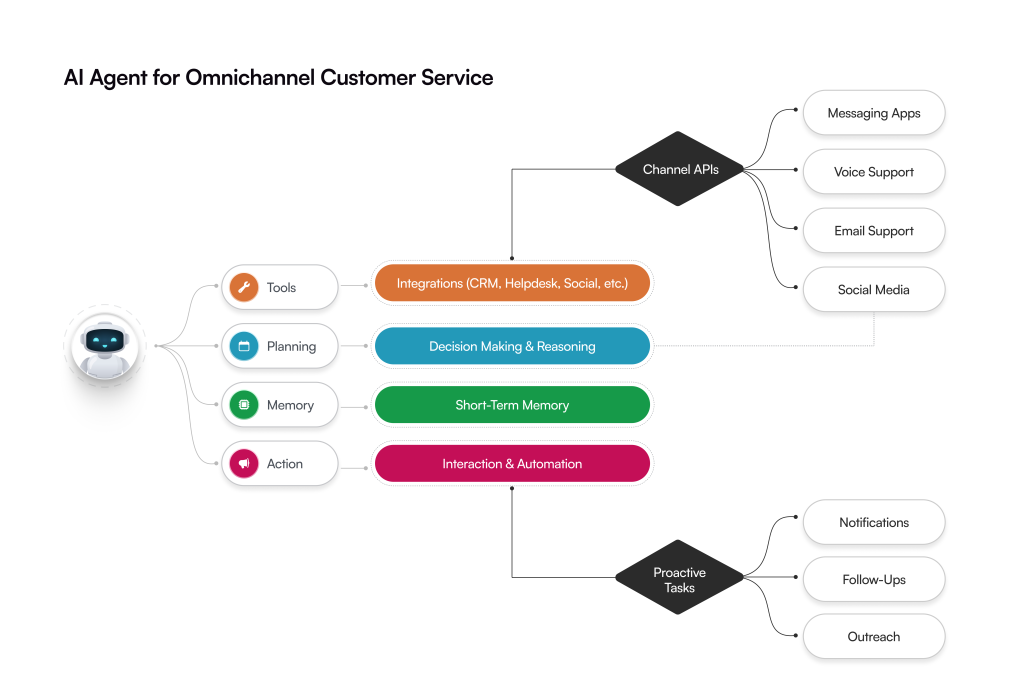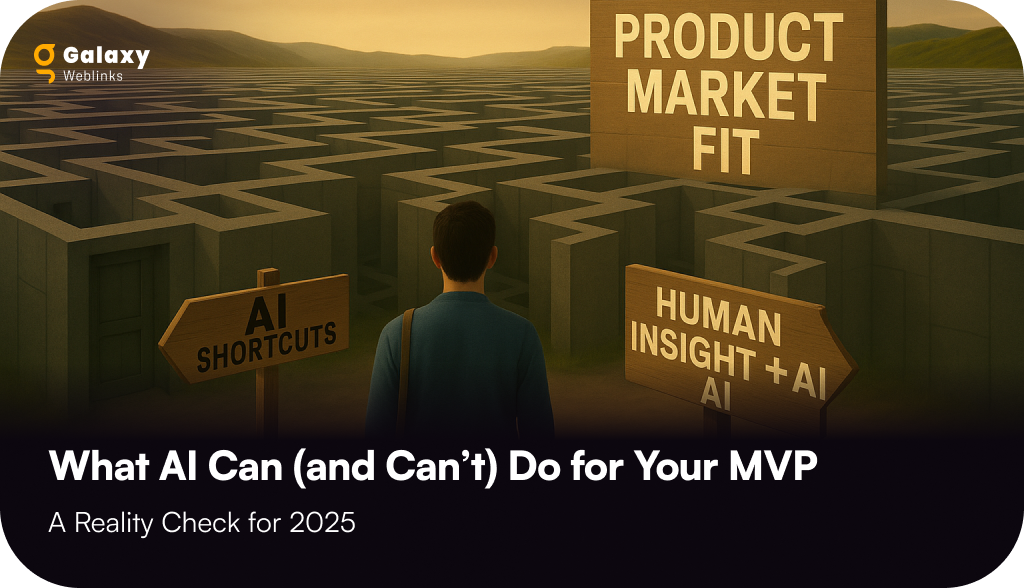In a world where customer expectations shift faster than product launch cycles, AI is not just supporting service—it’s rewriting the rules of engagement in real time. From Starbucks delivering hyper-personalized offers on its app to Home Depot guiding customers through complex DIY projects via AI chatbots, the brands that win aren’t reacting—they’re anticipating.
Generative AI and AI-driven services are the core engines behind better conversations. AI now predicts what customers need before they ask. It personalizes every touch. And it turns routine support into action that feels human. Nike uses predictive analytics to suggest the right shoe at the right time. JPMorgan Chase uses AI to see a client’s need before it appears. That’s not magic. That’s precision—done at scale.
The scale is undeniable: Accenture predicts AI could lift corporate profitability by 38% by 2035. But beyond numbers, the real shift is experiential. It’s about personalized customer journeys that feel intuitive, real-time service that feels human, and proactive support that feels thoughtful.
AI is everywhere. But you get success by using it right. The winning brands don’t chase numbers. They chase clarity. Brands use AI in customer experience to predict. Smart systems now recommend before customers even ask. Chatbots fix problems before they appear. The future of customer experience isn’t coming—it’s here.
Moving From Traditional Customer Support Towards AI-driven Customer Experience
| Aspect | Conventional CX | AI-Powered CX |
| Customer Support | Reactive Customers reach out after an issue arises | Proactive AI predicts issues and offers solutions before they occur |
| Resolution Time | Long wait times Manual escalation | Real-time assistance Use of chatbots, voice AI, and automated workflows |
| Personalization | Generic interactions and solutions to everyone | Hyper-personalized experiences Analysis of behavior, history, and preferences |
| Scalability | Limited Requires more staff and resources to handle volume | Unlimited AI scales effortlessly across regions, languages, and channels |
| Customer Journey Mapping | Fragmented across platforms and often siloed | Unified, omnichannel view powered by AI-driven insights |
| Decision-Making | Based on historical data, often outdated | Predictive — real-time analytics and forecasting for smarter engagement |
| Cost Efficiency | High operational costs due to manual processes | Reduced costs through automation and optimized resource allocation |
| Customer Satisfaction | Inconsistent and heavily dependent on agent expertise | Consistently high, driven by instant, tailored, and seamless experiences |
Customer service has always been reactive: A call came in. An agent replied. The customer waited again. That world is ending.
AI has changed the rhythm. Chatbots and generative tools don’t react—they move first. They turn friction into flow.
Look at Sephora. Its AI chatbots don’t just answer—they guide. They help customers find products, suggest what fits, and even book appointments. Every click feels smoother. Every step feels planned.
This is where the edge appears.
Proactive support sees trouble before it hits. An e-commerce site can spot a shipping delay and fix it before the buyer knows.
Amazon does it. Zappos does it.
That’s why their customers stay. Because trust begins before the problem ever does.
The numbers underline the opportunity: Gartner reports that AI can reduce 80% of common customer service issues by 2029. But the real story is not efficiency—it’s the scale of engagement. AI lets brands deliver personalized, timely, and context-aware experiences without losing the human touch.
In this landscape, the edge is not just integrating AI in customer experience—it’s applying it intelligently. From AI chatbots that anticipate needs to generative AI shaping dynamic experiences, the brands that lead turn service interactions into a competitive advantage.
AI in Customer Experience: Crafting Personalized Customer Journeys at Scale
From browsing history and click patterns to past purchases and in-app behavior, AI in customer journeys is not just tracking data—it’s turning it into action. Personalized customer journeys are no longer about segmentation—they’re about anticipation at scale.
Generative AI crafts content that feels human and contextual. Product recommendations, marketing messages, visuals—everything adapts to the individual, in real time. Stitch Fix predicts your next outfit. Sephora suggests your next shade. Netflix serves your next binge. Every interaction is personalized, timely, and predictive.
The impact is tangible. McKinsey finds personalization can boost revenue by up to 40% and generate over $1 trillion in value. But the real advantage is not the numbers—it’s the experience. Customers do not just engage—they feel understood. They do not just shop—they stay loyal.
AI in CX is a vision. Generative AI builds campaigns made for one person at a time. AI insights shape every touch.
The best brands make journeys that feel easy. Fast. Predictive. Human.
Integrating AI Across Channels: Omnichannel Experiences

Customer journeys move fast. Faster than most businesses can follow.
A shopper discovers on Instagram, compares on mobile, buys on desktop, and wants support on WhatsApp—all before lunch.
AI-driven CX is stitching the entire experience together.
1. Personalized Engagement Across Platforms
The old model of personalization—static email offers and cookie-based retargeting—is obsolete. Customer engagement AI now builds unified profiles that move with customers across every channel. The payoff? Consistency, trust, and higher conversion at scale.
- Starbucks: Deep Brew AI stitches together app orders, in-store purchases, and loyalty rewards so every interaction feels like it comes from one brain.
- Nike: Their AI ecosystem connects browsing, purchase history, and even Nike Run Club data, creating a loop where fitness activity informs product drops and offers.
2. Conversational AI at Scale
Customer service can no longer reset at every channel switch. AI chatbots and voice assistants are rewriting this playbook by carrying context forward—making support continuous, not fragmented.
- Sephora: Start with a Messenger chatbot to discover a product, move to WhatsApp to book a consultation, and still see synced recommendations in-app. Context is not lost; it compounds.
- Domino’s: With “Dom,” voice orders flow across Alexa, Google Home, app, and phone calls. The system remembers preferences everywhere, creating loyalty through ease.
3. Inventory and Fulfillment Sync
When promises break in e-commerce, it’s not marketing that failed. It’s connection.
AI demand forecasting fixes that. It links digital intent to physical delivery. It makes sure what’s promised is what’s received.
That’s where trust lives—and where loyalty begins.
- Walmart: AI demand forecasting aligns online orders with local inventory, making delivery estimates accurate instead of aspirational.
- H&M: Customers see live in-store stock while browsing online, reserve items instantly, and pick them up the same day. Convenience becomes part of the brand’s value.
4. Predictive Customer Journeys
Reactive support is table stakes; proactive customer support is the differentiator. Predictive AI anticipates needs before customers voice them, reducing friction while deepening trust.
- Amazon: Predictive engines rewrite homepages, emails, and push notifications in real time, anticipating what you’ll want next across every device.
5. Bridging Online and Offline
The future of omnichannel is not digital versus physical—it’s both, seamlessly blended. Generative AI and AR bring context from one world into the other, erasing the boundaries customers do not care about.
- IKEA: With its AR-powered app, customers visualize furniture at home and instantly check in-store availability. The transition from screen to store is effortless.
- Disney: MagicBand remains the benchmark—AI-powered personalization that connects rides, hotels, retail, and dining into one continuous guest journey.
Future Trends: Preparing for the Next Wave of AI in CX
The next wave of AI in customer experience will not just automate—but anticipate, empathize, and co-create. Organizations aren’t looking for incremental improvements; they’re looking for the platforms, intelligence, and foresight that define the next decade of customer engagement.
1. Emotion and Context-Aware AI
AI will read not just clicks, but moods. Facial recognition, voice sentiment, and behavioral cues will allow brands to adapt interactions in real time.
- Example: Affectiva’s emotion AI is being used by automotive and retail brands to measure customer reactions, enabling real-time adjustments to marketing messages or in-store experiences. Imagine a digital assistant adjusting tone, offers, and even visuals based on your emotional state.
2. Predictive Marketing at Scale
Beyond anticipating service needs, AI will forecast intent before it manifests, triggering proactive engagement and hyper-timed offers.
- Example: Amazon’s anticipatory shipping lays the groundwork; soon predictive engines will pre-launch marketing campaigns tailored to an individual’s predicted purchases across channels.
3. Hyper-Personalization with Generative AI
Personalization will become truly dynamic—AI creating copy, visuals, and recommendations per individual in real time. Static templates will be obsolete.
- Example: Netflix experiments with AI-generated thumbnails tailored to each viewer’s preferences. In retail, Shopify merchants are beginning to auto-generate custom product visuals and descriptions for micro-audiences.
4. Voice and Conversational Commerce as Primary Channels
Voice interactions will move from novelty to first-class channels, with AI managing intent, context, and even predictive ordering.
- Example: Domino’s and Starbucks are early adopters, but the next phase is fully predictive: voice assistants proactively suggesting purchases (“Your usual latte is ready—should we add your favorite pastry?”).
5. AI-Driven Spatial and Immersive Experiences
The intersection of AI, AR/VR, and spatial computing will redefine “shopping” and engagement. Experiences will be contextually aware, visually personalized, and fully interactive.
- Example: IKEA’s AR app hints at the future; soon, AI will create immersive digital showrooms where layouts, lighting, and product recommendations evolve in real time based on a user’s behavior and preferences.
6. Autonomous Customer Experience Orchestration
The ultimate frontier: AI not just informing decisions but running entire CX journeys autonomously—from marketing and sales to support—adjusting in real time for individual customers at enterprise scale.
- Example: Early pilots in banking and e-commerce use AI to autonomously route high-value clients, preempt friction points, and tailor experiences end-to-end without human intervention.
Strategic Takeaway: Beyond Tools, Building AI-First CX
From AI-driven personalization to omnichannel orchestration, trusted CX consulting services demand design, strategy, and execution fused into one. The UI/UX-first approach of Galaxy Weblinks does not layer intelligence on top of clunky interfaces; it makes every interaction feel seamless, intuitive, and human.
With 100+ enterprises transformed and 670+ professionals pushing the boundaries of CX, we do not just implement tools—we craft experiences that move the needle. Brands like NETGEAR, Pepsi, and Staples partner with us to turn predictive journeys, AI chatbots, and generative personalization into real business impact as well as for various other services.
In a world awash with AI, we make it strategic, intelligent, and creative. With us, your CX is not just responsive—it’s visionary. Partner with us to make every customer interaction count.
FAQs
1. How is AI redefining customer experience today?
AI is changing how customers connect with brands. Chatbots now solve problems in seconds. Personalization happens in real time. The shift isn’t slow—it’s sharp. Enterprises using AI-driven service close tickets 40% faster. Their loyalty scores beat industry norms. The result is simple: speed builds trust.
2. Where does generative AI add the most value?
Its strength isn’t in quantity—it’s in clarity. Generative AI shapes journeys that feel personal. It crafts offers, messages, and content that change with the moment. E-commerce companies using it see 15–25% higher conversions. More people come back to buy again. That’s the proof.
3. Why is proactive customer support becoming the new baseline?
Because reacting is old thinking. Proactive support sees trouble before it hits. It predicts intent, reduces churn, and earns trust early. Brands using AI for engagement report 25–35% fewer tickets. Their customers stay longer. Their bonds grow stronger.
4. What does omnichannel AI execution actually look like?
It isn’t about being everywhere. It’s about being the same everywhere. AI connects web, mobile, social, and voice into one line of experience. When companies adopt it, resolution times drop by half. Brand loyalty deepens. The journey feels effortless—and that’s what customers remember.
5. What’s next in AI technology trends for CX?
The next step isn’t more automation—it’s smarter empathy. AI will read tone, predict needs, and respond with understanding. It will blend emotion with precision. Hyper-personalization, voice commerce, and predictive marketing are already here. Early adopters see double-digit engagement gains. The future isn’t coming—it’s already speaking.

